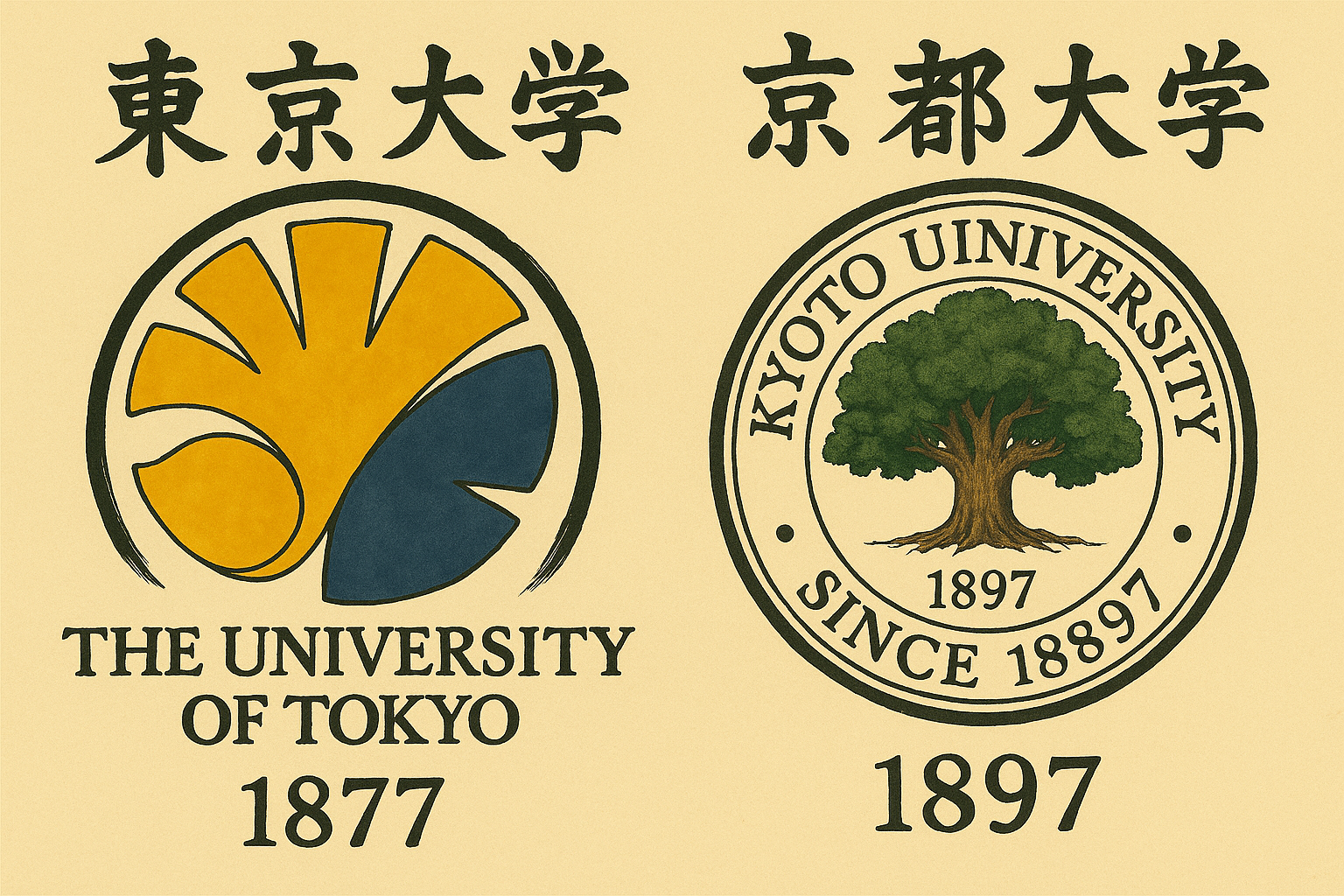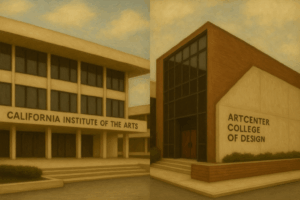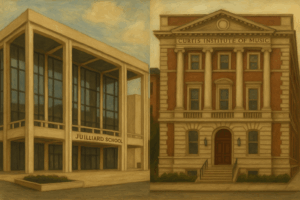
The GOAT of Japanese Universities?
At the pinnacle of Japanese higher education stand two colossal names: the University of Tokyo and Kyoto University. Often compared to the UK’s Oxford and Cambridge, these two institutions are more than just academic rivals; they are cultural icons symbolizing two different ideals within Japanese society. If the eastern giant, the University of Tokyo (Todai), is the architect of Japan’s modernization and a cradle for the elite, then the western sage, Kyoto University (Kyodai), is a nursery that has produced original thinkers and Nobel laureates, founded on critical intellect and a free academic spirit.
This article goes beyond the simple question of ‘which university is better?’ It will be a journey to explore a more fundamental question: ‘What kind of talent, pursuing which values and visions, heads to which university?’
1. History and Origin: Cornerstone of an Empire vs. The Spirit of Freedom
The fundamental differences between the two universities begin with their founding backgrounds.
The University of Tokyo: Architect of Japan’s Modernization
In 1877, as the Meiji government laid the foundations for a modern state after the Meiji Restoration, it established the University of Tokyo as the first imperial university to cultivate the talent needed for national development. This was a national project to systematically produce the bureaucrats and engineers who would lead the country.
The unique school-clique culture known as the ‘Todaibatsu’ (東大閥) was formed from this background. This refers to the phenomenon where Todai graduates occupy key positions in politics, government, and business, forming powerful human networks and mutually supporting each other. Graduation was synonymous with entry into the highest echelates of Japanese society, and Todai established itself as the undisputed ‘cradle of the elite.’
The ‘Akamon’ (Red Gate) of the Hongo Campus, a symbol of the University of Tokyo, represents the fusion of old-world authority with new-era intellect, showing that the campus itself is a stage for discussing knowledge at the center of power.
Kyoto University: A Rebellious Spirit and Academic Freedom
In 1897, Kyoto University was established as the second imperial university to check the dominance of the University of Tokyo and ensure academic diversity. Its first president famously declared, “Kyoto University is not a branch or a miniature version of the University of Tokyo,” emphasizing its independent academic culture.
Its most brilliant achievement was the birth of the ‘Kyoto School’ (京都学派) of philosophy. Led by Nishida Kitaro, philosophers of the Kyoto School critically embraced Western philosophy while building a unique philosophical system based on Eastern thought. This is regarded as a great intellectual legacy born from Kyoto University’s ‘free academic spirit.’
The spirit of freedom and resistance at Kyoto University is visually represented by the massive ‘tatekanban’ (vertical signboards) created and installed by students, and the Yoshida Dormitory, which has a tradition of student autonomy for over 100 years.
2. Academic Style and Culture: The Standardized Elite vs. The Eccentric Genius
The University of Tokyo: The Brains that Move Japan
In Japanese pop culture, the University of Tokyo is depicted as the ‘ultimate goal’ and a ‘guaranteed ticket to success.’ The popular manga Dragon Zakura reinforces the myth that ‘getting into Todai changes your life,’ and solidifies the social stereotype of the ‘Todai student’ as diligent but lacking in personality. Located in Tokyo, the world’s largest metropolis, the campus offers students limitless opportunities alongside a fiercely competitive environment.
Kyoto University: Misfits Gathered Under a ‘Free Academic Spirit’
The unique culture of Kyoto University is best illustrated by the anime The Tatami Galaxy.
The story follows a protagonist who, dreaming of a ‘rose-colored campus life,’ wanders through various clubs. It humorously portrays Kyoto University students searching for their own meaning rather than following a set formula for success. This stands in stark contrast to works set at the University of Tokyo, which emphasize the result of ‘success.’
The serene environment of Kyoto, Japan’s ancient capital, encourages students to focus on fundamental questions rather than immediate achievements and to pursue their studies at their own pace.
3. Academic Achievements and Future Vision (as of 2025)
Global University Rankings
| Ranking Body | Field | University of Tokyo Rank | Kyoto University Rank |
|---|---|---|---|
| QS World University Rankings | Overall | 32 | 50 |
| Engineering & Tech | 18 | 65 | |
| Natural Sciences | 14 | 32 | |
| THE (Times Higher Education) | Overall | 28 | 55 |
| Engineering | 28 | 101-125 | |
| ARWU (Shanghai Ranking) | Overall | 27 | 45 |
Research and Innovation for the Future
- University of Tokyo’s UTokyo Compass: With a vision to become a ‘hub for collaborative creation of knowledge,’ it is investing heavily in AI and quantum computing to foster technology-based global leaders.
- Kyoto University’s WINDOW Vision: It aims to build a sustainable society centered on the concept of the ‘Humanosphere.’ It seeks a harmonious coexistence for humanity through humanistic reflection and interdisciplinary fusion.
4. Alumni Power: The Networks that Move Japan
Top 10 Notable Alumni from the University of Tokyo
The list of Todai alumni reads like a roster of the figures who have shaped modern and contemporary Japanese history.
| Name | Field | Major Achievement |
|---|---|---|
| Eisaku Satō | Politics | 61st-63rd Prime Minister, Nobel Peace Prize Laureate |
| Yasuhiro Nakasone | Politics | 71st-73rd Prime Minister |
| Kiichi Miyazawa | Politics | 78th Prime Minister |
| Yukio Hatoyama | Politics | 93rd Prime Minister |
| Kiichiro Toyoda | Business | Founder of Toyota Motor Corporation |
| Takafumi Horie | Business | Founder of Livedoor |
| Leo Esaki | Science | Nobel Prize in Physics, 1973 |
| Masatoshi Koshiba | Science | Nobel Prize in Physics, 2002 |
| Yasunari Kawabata | Literature | Nobel Prize in Literature, 1968 |
| Kenzaburō Ōe | Literature | Nobel Prize in Literature, 1994 |
Top 10 Notable Alumni from Kyoto University
Kyoto University has produced the most Nobel laureates in Japan and boasts a world-class reputation, especially in the basic sciences.
| Name | Field | Major Achievement |
|---|---|---|
| Hideki Yukawa | Science | Japan’s first Nobel laureate (Physics, 1949) |
| Shin’ichirō Tomonaga | Science | Nobel Prize in Physics, 1965 |
| Kenichi Fukui | Science | Nobel Prize in Chemistry, 1981 |
| Susumu Tonegawa | Science | Nobel Prize in Physiology or Medicine, 1987 |
| Ryōji Noyori | Science | Nobel Prize in Chemistry, 2001 |
| Shinya Yamanaka | Science | Nobel Prize in Physiology or Medicine, 2012 (iPS cells) |
| Tasuku Honjo | Science | Nobel Prize in Physiology or Medicine, 2018 |
| Kitaro Nishida | Philosophy | Founder of the Kyoto School |
| Fumimaro Konoe | Politics | 34th, 38th-39th Prime Minister |
| Yasushi Inoue | Literature | Akutagawa Prize-winning author |
Conclusion: What’s Your Choice? The Eastern Giant vs. The Western Sage
If you dream of becoming a leader who understands the system from the center of society and guides nations and organizations based on a powerful network, the eastern giant, the University of Tokyo, might be the better choice. Todai is the optimal place to learn the operating principles of Japanese society and master how to move the world from the heart of power.
On the other hand, if you wish to become an explorer who asks your own questions rather than following a predetermined path, who deepens your original thinking in academic freedom, and contributes to the intellectual heritage of humanity, then the western sage, Kyoto University, will resonate more with your soul. Kyodai offers the most liberating intellectual playground for those who seek truth at their own pace, unswayed by the current trends.
Ultimately, the choice between the two universities is akin to a choice between leading Japanese society from within or opening new horizons for the world from the stage of Japan. What makes your heart beat faster? Your choice will be a reflection of the future you are destined to create.


